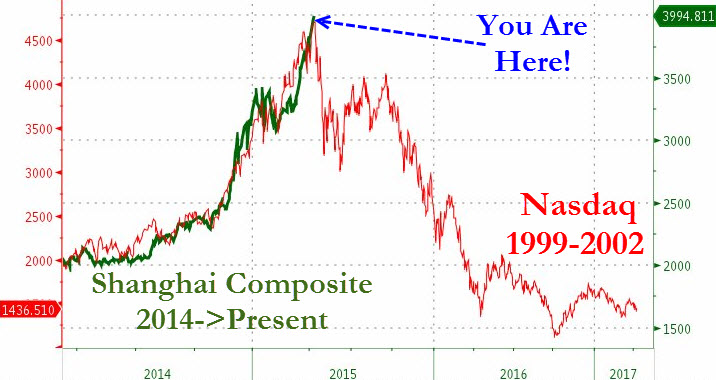On September 1, 2023, Walgreens Boots Alliance Inc (WBA, Financial) made an unexpected announcement regarding the departure of Rosalind Brewer from her position as chief executive officer. This transition was portrayed as a mutual agreement between Brewer and the company. Brewer had assumed her role in March 2021, marking her brief tenure of less than three years. During her leadership, the company’s stock experienced a decline of approximately 25%. However the stock has been in a secular decline since 2015, which long predates Brewers appointment.
Challenges and Interim Leadership
Walgreens Boots Alliance Inc (WBA, Financial) encountered numerous challenges during her tenure. These included navigating multiple waves of the COVID-19 pandemic, adjusting pharmacy hours due to workforce shortages, and facing a reduction in the number of retail pharmacy locations. As an interim measure, Ginger Graham, a longstanding board member, has been appointed as the interim CEO. Walgreens will be searching for a new CEO to shepherd its turnaround.
Strategic Investments under Brewer’s Leadership
Throughout her short tenure with the company, Brewer emphasized the importance of prioritizing Walgreens’ U.S. healthcare sector, recognizing it as a pivotal driver of future growth. Under Brewer’s leadership, the company made strategic investments in this area to position itself effectively within the evolving healthcare industry. These initiatives included the $2.3 billion acquisition of Shields Health Solutions (specialty pharmacy care), a $5.2 billion investment in VillageMD (a primary care services provider), and a $3.5 billion investment to facilitate the acquisition of Summit Health, the parent company of an urgent care clinic chain.
Slow Progress and Brewer’s Exit
Walgreens’ foray into the healthcare sector was needed, the relatively slow progress on turning the base business around has been disappointing. It is likely that the company’s board also lost confidence, leading to Brewer’s exit.
Walgreens’ Position in the US Market
Walgreens Boots Alliance Inc (WBA, Financial) stands out as the second-largest retail pharmacy chain within the United States, (after CVS Health Corp (CVS, Financial)) boasting an extensive network of more than 8,500 locations. Remarkably, nearly three-quarters of the American population reside within a mere five-mile radius of a Walgreens outlet. Approximately two-thirds of the company’s revenue stems from prescription drug sales, solidifying Walgreens’ position as a key contributor, accounting for 20% of the total prescription revenue in the United States. In addition to pharmaceutical sales, Walgreens diversifies its income sources through the sale of retail products in its front shop, encompassing general wellness consumables and their proprietary branded merchandise, along with revenue generated from European drug wholesale operations and the healthcare sector described above. The US retail pharmacy segment is by far the largest part of the business while the Healthcare segment is very new and as yet unprofitable.
Competition and Profit Pressure in the US Pharmacy Segment
The US pharmacy segment is facing intense competition not only from mail order pharmacies but profit pressure from Pharmacy Benefit Managers (PBMs) which are part of the Health Maintenance Organizations. The US has three large PBM’s which are increasingly powerful and they control the margins they will allow the retail pharmacy chains. They have been putting the squeeze on Walgreens and other pharmacy chains reducing their operating margins and return on invested capital over time.
Value-Added Services by Retail Pharmacy Chains
In order to compete with mail order pharmacies and cope with pressures from PBMs, retail pharmacy chains like Walgreens Boots Alliance Inc (WBA, Financial) are focusing on providing more value-added services. These services include:
- Medication adherence programs: These programs help patients stay on their medications by providing reminders, counseling, and other support.
- Patient education: Retail pharmacies are offering more patient education resources, such as educational materials, online courses, and pharmacist consultations.
- Telehealth services: Retail pharmacies are offering telehealth services, which allow patients to see a doctor or pharmacist remotely.
- In-store clinics: Retail pharmacies are opening in-store clinics that offer a variety of healthcare services, such as vaccinations, flu shots, diagnostic tests and basic medical exams. The value of pharmacies delivering Covid shots and tests during the pandemic was demonstrably obvious.
Investment in Technology by Retail Pharmacies
Retail pharmacies are also investing in technology to improve efficiency and customer service. This includes technologies such as:
- Automated dispensing machines: These machines can dispense medications more quickly and accurately than human pharmacists.
- Electronic prescribing: This technology allows doctors to send prescriptions directly to the pharmacy, eliminating the need for paper prescriptions.
- Patient portals: These portals allow patients to view their prescriptions, refill medications, and communicate with their pharmacists online.
Future Trends in Retail Pharmacy
The future of retail pharmacy is uncertain, but the industry is adapting and innovating in order to meet the changing needs of patients. By providing value-added services and investing in technology, retail pharmacies can remain competitive and continue to play a vital role in the healthcare system.
Here are some additional trends that are likely to shape the future of retail pharmacy:
- The growing demand for personalized healthcare: Retail pharmacies will need to find ways to provide more personalized healthcare services to patients. This could include offering genetic testing, personalized medication regimens, and other services.
- The increasing use of digital technologies: Retail pharmacies will need to embrace digital technologies in order to improve efficiency and customer service. This could include using telemedicine, mobile apps, and other technologies.
- The rise of new healthcare delivery models: Retail pharmacies may need to partner with other healthcare providers, such as hospitals and doctor’s offices, in order to deliver care more effectively. Again, Walgreens Boots Alliance Inc (WBA, Financial) has taken many steps to move into primary and acute care.
Challenges and Opportunities in Retail Pharmacy
The future of retail pharmacy is uncertain, but the industry is facing a number of challenges and opportunities. By adapting and innovating, retail pharmacies can remain competitive and continue to play a vital role in the healthcare system.
The stock meanwhile fell sharply and is looking undervalued as shown in the valuation chart below.
Conclusion
In my overall assessment, I believe the stock market’s outlook on Walgreens Boots Alliance Inc (WBA, Financial) is overly pessimistic regarding its future prospects. This anxiety is now exacerbated by the on-going leadership change.
Walgreens operates in a defensive sector that is relatively protected from economic downturns and currently offers an appealing dividend yield of 8% though there is risk to that. Notably, Walgreens holds the prestigious title of a “dividend aristocrat,” having consistently distributed dividends for 47 consecutive years. Walgreens also operates a virtual duopoly in retail pharmacy in the US with CVS Health Corp (CVS, Financial).
While it looks improbable for the company to fully recapture its past heights due to a changing business landscape, Walgreens Boots Alliance Inc (WBA, Financial) is actively reshaping itself into a vertically integrated healthcare player. In some ways Walgreens reminds me of Walmart which went through a long period of stagnation as it adjusted to new competitors and the onslaught of the e-commerce and the internet.
WMT Data by GuruFocus
Remarkably, the company’s stock is trading at an exceptionally low forward price-earnings ratio of approximately six. These modest expectations position the company favorably to deliver positive surprises as conditions normalize and Walgreens moves beyond the challenges posed by the Covid pandemic and opioid settlement issues.






